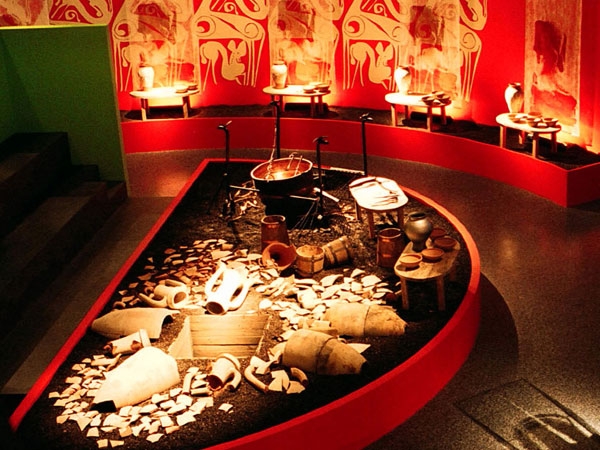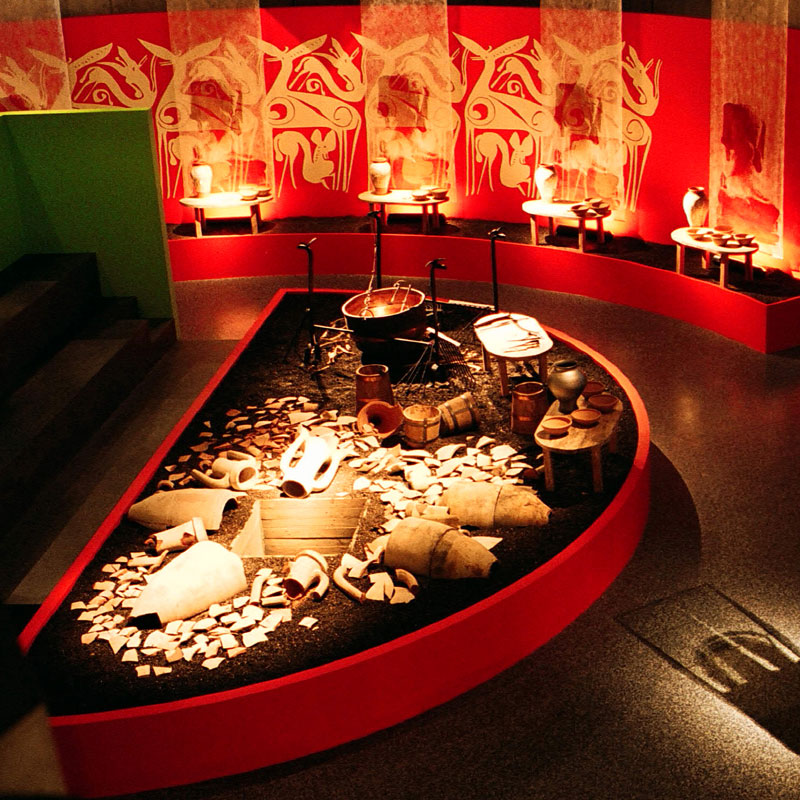When the amphora is dry, friends disperse. Horace
On Fourvière Hill in the eighties, archaeologists were thrilled to discover a large quantity of terracotta bits. They were pieces of amphorae, the two-handled recipients used in Antiquity. But what was so extraordinary about this debris?
It helped to prove a number of things! After analysis, archaeologists established that these bits dated from the late second century B.C. This everyday debris indicated that the Gauls were already present at the Lyon site nearly one hundred years before the Roman conquest.
Located on the Rhône-Saône axis, Lyon was already an economic hub, in particular for the wine trade. Here, archaeologists found the remains of banquets. But something was strange: the corks had not been removed from the containers. Did the Gauls waste good wine?
It's not very likely. Wine was a luxury product in Antiquity and was very expensive. In addition, this particular wine came from Italy! We know this because of the shape of the amphorae and the inscriptions engraved on them. If the corks were still in place, it was simply because the amphorae were slashed open! The neck of the amphora was sliced with a large blade, causing it to break and freeing the contents.
Although they might be at first glance seem insignificant, these bits are very valuable archaeological objects. They can be used to precisely date the installation of Gallic populations in Fourvière. Above all, we know that our predecessors weren't very different from us. They also liked to slash open bottles for a party!
By Artips


